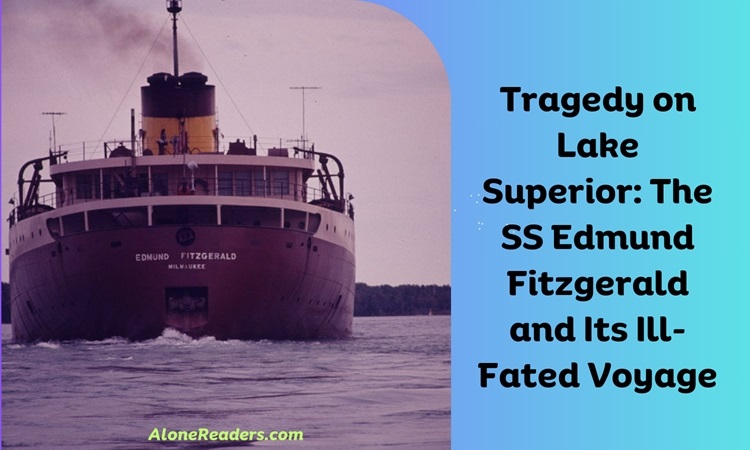
Lake Superior, the largest and deepest of the Great Lakes, has long been known for its beauty and its perils. The lake's vast expanse and depth contribute to its turbulent maritime history, marked by numerous shipwrecks that bear witness to its challenging navigation conditions. Among these, the most infamous is undoubtedly the wreck of the SS Edmund Fitzgerald in 1975, a tragedy that encapsulates the lake's unforgiving nature and continues to resonate in the collective memory of maritime history.
The SS Edmund Fitzgerald, a massive ore carrier, was a titan among the Great Lakes freighters. Launched in 1958, it was, at the time, the largest ship on the Great Lakes and remained a prominent figure in the shipping industry for many years. Measuring over 700 feet in length, the Fitzgerald was an engineering marvel, designed to carry vast loads of iron ore from mines near Duluth, Minnesota, to iron works in Detroit and other ports. Its size, however, did not grant immunity from the treacherous conditions that Lake Superior could unleash.
The fateful voyage that led to the ship's demise began on November 9, 1975. The Fitzgerald, under the command of Captain Ernest M. McSorley, embarked from Superior, Wisconsin, with a full cargo of iron ore pellets bound for a steel mill near Detroit. Accompanied by another freighter, the SS Arthur M. Anderson, the Fitzgerald set off into waters that were forecasted to be stormy, but not unusually so for the notorious November gales of the Great Lakes.
As the vessels made their way across Lake Superior, they encountered a massive winter storm, far more severe than predicted. The National Weather Service had issued gale warnings, but as the day progressed, these were upgraded to a full storm warning. The Fitzgerald and the Anderson found themselves battling waves that reached heights of up to 35 feet and winds that howled at nearly 60 miles per hour.
Throughout the afternoon and into the evening of November 10, the Fitzgerald maintained radio contact with the Anderson, reporting increasing difficulty. Captain McSorley relayed that the Fitzgerald was taking on water and had lost some of its railing and vent covers. The situation worsened when the ship's radar failed, forcing them to rely on the Anderson to guide them through the blinding storm.
The last communication from the Fitzgerald came at 7:10 PM, with Captain McSorley's chilling words: "We are holding our own." Mere minutes later, the ship vanished from radar screens, disappearing into the tumultuous waters of Lake Superior. The Anderson, along with other nearby ships and the Coast Guard, launched a frantic search effort, but the Fitzgerald and her crew were nowhere to be found. All 29 men aboard had perished, and the ship had sunk to the lake's icy depths, which reached over 500 feet in the area of the wreck.
The loss of the SS Edmund Fitzgerald remains the most significant in Great Lakes history. It sparked a flurry of investigations and theories about what caused the disaster. Some speculated that the Fitzgerald had been swamped by a rogue wave, while others suggested structural failure due to the heavy load and the battering waves. Despite extensive investigations, the exact cause of the sinking remains a matter of debate.
The tragedy of the Fitzgerald brought about significant changes in shipping practices and weather forecasting on the Great Lakes. Stricter regulations for ship design and maintenance were implemented, and weather monitoring and reporting were enhanced to provide better guidance to ships navigating these treacherous waters.
The legacy of the SS Edmund Fitzgerald extends beyond the realm of maritime history. It has become a symbol of the might and the peril of the Great Lakes, a reminder of the respect these waters demand. The ship's story has been immortalized in songs, literature, and folklore, echoing the haunting refrain of a disaster that remains etched in the annals of Great Lakes lore.
Today, the tale of the Edmund Fitzgerald continues to captivate and educate. It serves as a poignant reminder of the bravery of those who navigate the Great Lakes and the unpredictable, often merciless nature of these inland seas. The wreck of the Fitzgerald, lying in the cold depths of Lake Superior, is a somber monument to the 29 souls who lost their lives in its icy embrace, a tragic testament to the lake's formidable power.